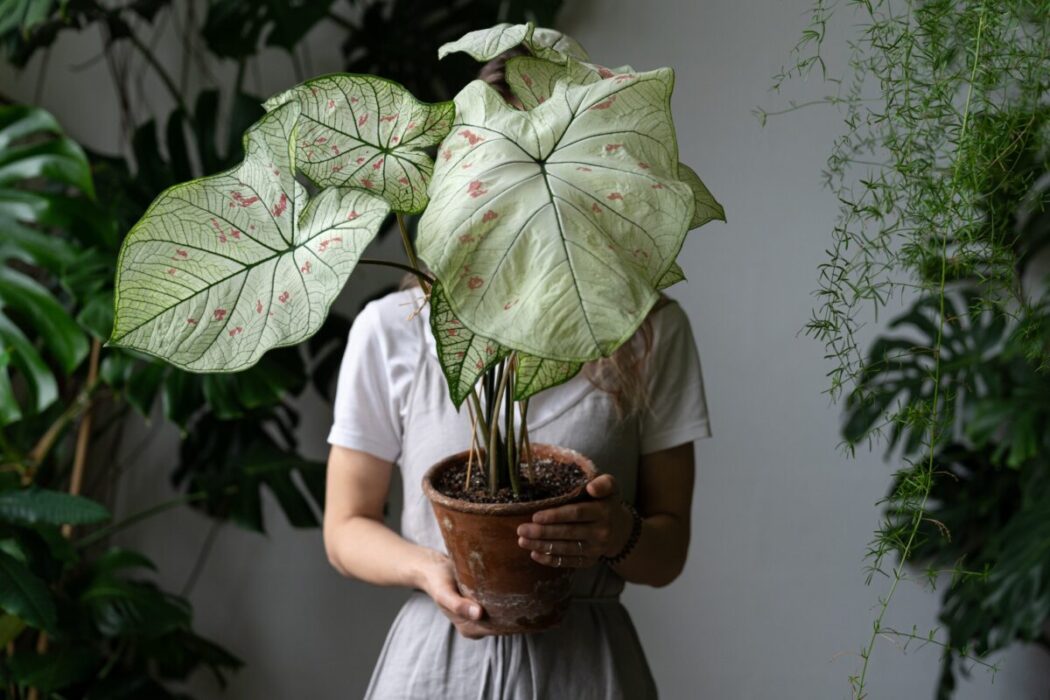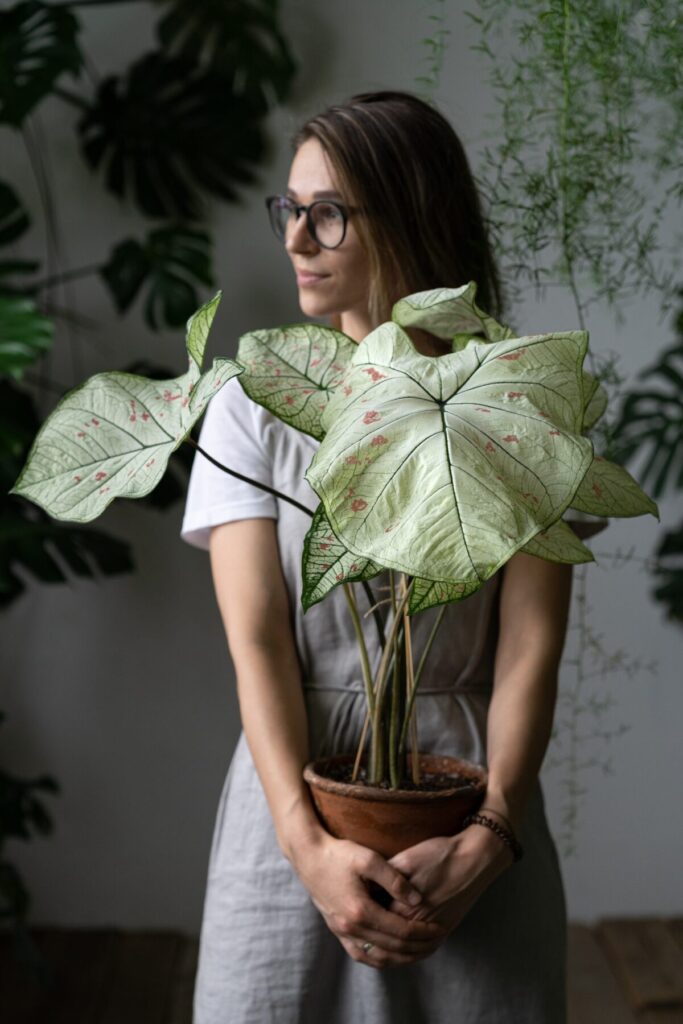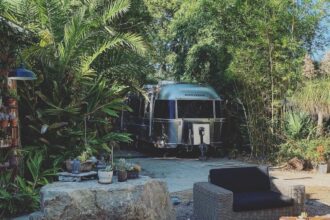Growing Caladium Indoors: This Colorful Beauty Can Thrive
[C]In the South, Caladium are referred to as Elephant Ears known primarily for their large, heart-shaped leaves that often resemble the delicate yet strong visual of an elephant ear—but in bright vibrant colors. They love tropical environments like California, Texas, Louisiana, and are native to tropics in Central and South America. They grow like most of our styles here on the West Coast: in a great many decorative varietals. They’re absolutely essential to adding an element of earth to your in-home design—and a little greenery goes a long way.Turns out indoors plants offer more than just a visual stunner. According to a study published in the Journal of Physiological Anthropology, active interaction with indoor plants (like touching and smelling) can reduce physiological and psychological stress.
It boosts your mood by releasing cytokines, which then leads your brain to produce more serotonin. So, just by being around soil, these outdoorphins flood your body and boost your mood,” writes Joey Doherty, a Certified Wellness Counselor.
Caladium have long since been among those known as magical outdoor-only plants, but they are not only fit to be indoor, they can thrive and regenerate during the winter months with the right care. What kind of care, you ask?
WHAT YOU NEED TO KNOW
Caladium’s rarely produce flower blooms, come in 53 varietals, and are a foliage that produce vibrant, colorful leaves—including the eye-catching magenta pink and green varietal—from spring to fall. They do best in high humidity regions with lots of heat and are entirely frost intolerant.
According to NASA, plants like Peace Lily and English Ivy can filter out toxic fumes caused by asbestos, mold, radon, formaldehyde, benzene and carbon monoxide. They absorb pollutants through their roots and leaves. Research also highlights that rooms with houseplants contain up to 60% less airborne molds and bacteria than rooms without any greenery.
While these beautiful plants are meant to be outside, when the colder months come and frost threatens their ability to thrive, bringing them indoors to extend their life is highly recommended. These bulbus natural wonders have curbside appeal but can also add color and life to spaces indoors, but they will require a little extra care and an understanding of how to prolong their life during the colder months.
PREPARING CALADIUMS FOR TRANSFER
Caladium have tender tubers* and bulbs**, and once carefully removed from the soil harnessing them to the ground, if the bulbs and tubers look healthy, placing them in containers can ensure their lifespan and even encourage new growth until spring comes.
While Caladium are native to South American tropical forests, they have produced beautifully in regions throughout the world that are ideally warmer and temperate with spikes of heat and humidity.
HOW TO TRANSFER
When transferring Caladium from outdoors to indoors, you will want to take them from the ground, paying special attention to handling their delicate tubers and bulbs with a gentle touch. Once healthy bulbs are visible, replant them in containers that can preserve the tubers and prevent the inevitable damage of cold winter conditions. It’s important to note that you should fertilize them prior to transferring and use their existing soil in the containers you will transfer them into.
Like so many plants, Caladium are resistant to many weather conditions but when the chill of winter comes, the icy cold can shock the variegated foliar and roots and cause them to die, which is why keeping them protected is so important.
Unlike the heat tolerance outdoors during spring and summer, Caladium plants prefer medium light when indoors as the intensity of hotter temperatures can damage the cells of the leaves and burn the plant.
WHEN TO PRUNE
When growing Caladium indoors, when you see blackening leaves that are dying off, wait until they are completely dark to pluck them. This protects the shoots blooming and budding at the heart of the plant. During the winter months, the leaves will have a resting period of about five months before regeneration, but when handled properly and grown with love, they will regenerate and be ready for replanting in spring.
SOIL TIP
Rich, well-drained indoor potting soil mix mixed with the natural outdoor soil will increase the chances of Caladium growth. Soil that has slight acidity is recommended. Miracle-Gro indoor potting mix is our editorial pick.
So what's next, now that you have an overview of how to prolong the life of your Caladium? Surround yourself in those elephant ears and breathe in a little serenity. But first also consider getting these indoor beauties: Parlor palm , Peach anthurium, Sansevieria and Pothos plants, find some gorgeous pots and containers and enjoy foliage throughout the fall and winter.
Calm environments at home promote more peace of mind. Be good to yourself.

CHEAT SHEET | TERMS + DEFINITION
*Tuber: A much thickened underground part of a stem or rhizome, serving as a food reserve and bearing buds from which new plants arise.
**Bulb: A rounded underground storage organ present in some plants, consisting of a short stem surrounded by fleshy scale leaves or leaf bases, lying dormant over winter.







